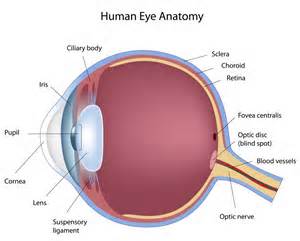Today’s letter in the A to Z challenge is ‘J.’ No. That was yesterday. I am catching up today. I hope you are not getting bored by my daily diseases. But diseases and illnesses that children suffer are what I blog about, what I write about and what I think about everyday. I have read some of the feedback and realize that there are many of you who are enjoying and learning from my A to Z disorders. My humble and sincere thanks to everyone that stops by to read.
Juvenile Retinoschisis is a genetic condition of the X chromosome. The mutations on the gene RS1 is the cause of Juvenile Retinoschisis. It is inherited in an X-linked recessive pattern. It has been found that it affects 5,000 to 25,000 people primarily males, and are usually identified when the child is in grade school but may be diagnosed as an infant. Although deterioration of vision in early life is common, it usually becomes stable until he is an adult.
The physical changes in Juvenile Retinoschisis occur within the light-sensitive membrane at the back of the eyeball formed of specialized nerve cells called Rods and Cones and vascular tissue (Retina). It is the area of the eye that is responsible for our vision. The retina splits into two layers, usually in the outer layer. The child with this condition will experience gradual deterioration of his vision and some physical symptoms such as: Cysts and ruptured vessels between the layers of the retina, holes in the retinal layers with a detachment of the retina from its underlying tissue in five to twenty-two percent of those diagnosed, blood spilling into the jelly like material inside the eye (Vitreous Hemorrhage), and changes in the (Macula), the area of the clearest vision in the retina. The child may also have difficulty focusing on an object called Strabismus, roving, or involuntary eye movements (Nystagmus).
Few with this disease go completely blind, but some have limited reading vision and are considered Legally Blind. In some cases, their vision can not be helped with glasses because the nerve tissue is too damaged. There are some clinical trials being held at this time, but now, there is no cure.


References:
1. Cassin, B. and Solomon, S. Dictionary of Eye Terminology. Gainsville, Florida: Triad Publishing Company, 1990.
2. “Clinical and Genetic Studies of X-Linked Juvenile Retinoschisis – Full Text View”. ClinicalTrials.gov. Retrieved 2012-12-15.
Disclaimer: The resources on this site should not be used as a substitute for professional medical care or advice. Users seeking information should consult with a qualified healthcare professional.




Another illness I have never heard of !
LikeLiked by 2 people
I am trying not to have anything that is so rare that it won’t be useful. This doesn’t happen that often, but it does happen.
LikeLiked by 2 people
It is all very interesting, sad but interesting. Xxxx
LikeLiked by 2 people
Thank you. I am glad you find it interesting.
LikeLiked by 2 people
Thank you for sharing. This sounds nasty and something no child should have to experience. Blessing to those who live with this or love someone with in.
LikeLiked by 1 person
You’re welcome. And thank you for stopping by to read.
LikeLiked by 1 person